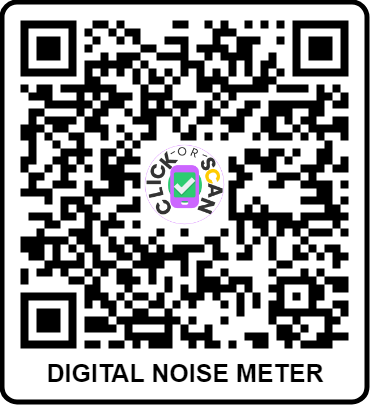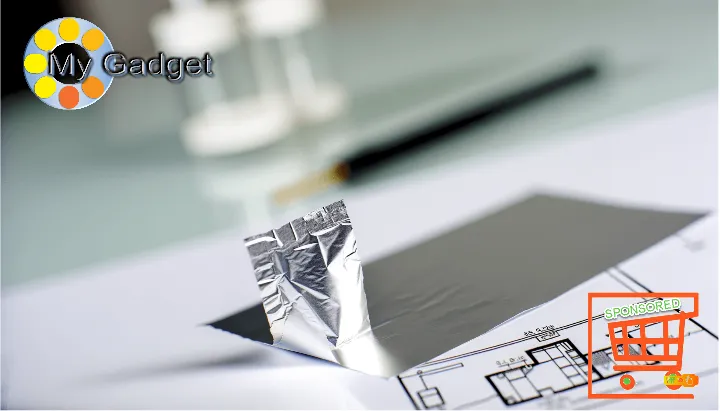Digital Noise Meter and Its Importance
In an increasingly digital world, where the integrity of sound quality is paramount across various industries, the Digital Noise Meter and Its Importance has emerged as a crucial tool for sound measurement and analysis.
This advanced device serves as an objective means of quantifying sound levels, offering precision and reliability that are indispensable in environments ranging from construction sites to recording studios.
As urbanization and technological growth accelerate, managing noise pollution and ensuring optimal auditory conditions has become more essential than ever.
The digital noise meter not only aids in compliance with regulatory standards but also enhances the overall quality of life by helping to mitigate the adverse effects of excessive noise.
Whether utilized by engineers, audiophiles, or environmental specialists, this instrument plays a pivotal role in various fields, facilitating informed decision-making and promoting acoustic safety.
Through the integration of sophisticated sensors and real-time data analysis, digital noise meters empower professionals to assess sound environments accurately, identify potential issues, and implement effective noise control measures.
As we delve deeper into the significance of digital noise meters, we will explore their functionality, applications, and the critical role they play in fostering a balanced auditory landscape in our modern society.
Table of Contents Digital Noise Meter and Its Importance
Digital noise meters measure sound levels accurately
These advanced devices utilize sophisticated technology to capture and analyze sound waves, providing precise readings across various frequencies.
The integration of digital signal processing allows for real-time data analysis and visualization, enhancing the user’s ability to interpret sound levels effectively.
With calibration options to ensure accuracy, these meters comply with numerous industry standards and regulations, making them indispensable tools for noise control in a range of environments, from construction sites to residential areas.
Furthermore, the portability and ease of use of digital noise meters enable professionals to conduct assessments in diverse situations without compromising accuracy.
Their ability to store data for later analysis is particularly valuable for long-term monitoring and reporting.
As urban environments continue to grow and noise pollution becomes a pressing concern, the reliance on these instruments will likely increase, ensuring compliance with health and safety guidelines while promoting a better quality of life for communities.
Essential for maintaining sound quality standards
Maintaining sound quality standards is crucial for a variety of industries, from music production to construction and urban planning.
Effective sound management not only enhances user experience but also ensures compliance with regulatory requirements designed to protect public health and well-being.
By accurately measuring sound levels, professionals can identify and mitigate excessive noise that may lead to hearing loss or other adverse effects on individuals’ quality of life.
In addition, adherence to sound quality standards fosters a culture of accountability and responsibility within organizations.
Establishing clear benchmarks for acceptable noise levels helps to create a structured approach to sound management, informing stakeholders of their obligations and encouraging proactive measures to address noise-related challenges.
This commitment to sound quality not only enhances operational efficiency but also contributes to a sustainable environment, reflecting a growing awareness of the impact of noise pollution in modern society.
Helps in noise control assessments effectively
Effective noise control assessments rely on precise measurements to evaluate sound levels in various environments.
Utilizing advanced equipment enables professionals to assess noise pollution accurately, facilitating informed decision-making in urban planning, environmental management, and occupational health.
By identifying specific noise sources and their impacts, stakeholders can develop targeted strategies to mitigate disruptions, ensuring compliance with local regulations and enhancing community well-being.
Moreover, a thorough understanding of sound dynamics aids in the planning and execution of noise reduction initiatives.
Organizations can implement effective sound insulation measures, optimize equipment usage, and design spaces that minimize auditory disturbances.
This proactive approach not only safeguards public health but also fosters collaboration among various sectors, promoting a shared responsibility for noise management and encouraging innovation in noise-reducing technologies.
Useful for environmental noise monitoring applications
Continuous monitoring of environmental noise is crucial for both regulatory compliance and public health awareness.
By employing sophisticated measurement instruments, stakeholders can gather real-time data on ambient sound levels, allowing for a comprehensive analysis of noise trends in specific locations.
This information is invaluable for identifying patterns related to traffic, industrial activities, and community events, enabling targeted interventions to alleviate excessive noise exposure.
Furthermore, the data collected can support long-term strategic planning by informing policies aimed at noise reduction.
For instance, municipalities can leverage monitoring results to establish quieter zones, enforce noise ordinances, and engage in public outreach initiatives that educate residents about the effects of noise pollution.
Such measures not only enhance the quality of life for community members but also foster a more harmonious relationship between urban development and environmental sustainability.
The integration of continuous noise monitoring into urban planning frameworks reflects a commitment to creating healthier living environments and sustainable growth.
Vital for compliance with regulatory requirements
Ensuring adherence to established noise regulations is essential for organizations across various sectors, including construction, transportation, and manufacturing.
Compliance with these regulations mitigates the risk of legal issues and potential fines, while also safeguarding public health and well-being.
By utilizing precise noise measurement tools, companies can not only monitor their environmental impact but also demonstrate their commitment to responsible practices.
This proactive approach fosters transparency with regulatory bodies and the community, enhancing the organization’s reputation and trustworthiness.
Moreover, effective noise management supported by accurate data collection can lead to improved operational efficiencies.
Organizations that consistently monitor noise levels are better equipped to identify areas for improvement in their processes, which may result in reduced noise generation.
This not only aligns with regulatory requirements but also contributes to creating a more sustainable business model.
Ultimately, a strategic emphasis on noise compliance can drive innovation and promote a culture of accountability, benefiting both the organization and the broader community.
Facilitates effective acoustic planning and design
enables more informed decision-making in the design of spaces and infrastructure.
By leveraging precise acoustic measurements, planners and designers can create environments that minimize noise interference and enhance auditory experiences.
This is particularly vital in settings such as concert halls, schools, and open offices, where sound quality significantly affects functionality and user satisfaction.
Incorporating detailed acoustic data into the planning phase allows for strategic design modifications that address potential noise issues before they arise.
By anticipating the acoustic impact of various materials, layouts, and building systems, designers can optimize sound insulation and absorption features.
This proactive design philosophy not only enhances the overall acoustic quality but also contributes to the long-term success of projects, ensuring they meet both user needs and regulatory standards effectively.
Assists in identifying noise pollution sources
Identifying the sources of noise pollution is essential for effective urban planning and public health initiatives.
Accurate measurements provided by advanced acoustic monitoring tools facilitate the pinpointing of specific contributors to noise disturbance, whether they stem from traffic, industrial activities, or other community sources.
This information is crucial for stakeholders, as it enables them to address noise issues at their origins, thereby implementing targeted mitigation strategies that can significantly enhance the quality of life for residents.
Furthermore, understanding the dynamics of noise pollution allows policymakers to develop more comprehensive regulations and community guidelines.
By continuously monitoring noise levels and analyzing data trends, municipalities can prioritize areas most affected by excessive noise, ensuring resources are allocated to interventions that will yield the greatest benefit.
This approach fosters a healthier living environment and promotes community well-being, reinforcing the importance of proactive noise management as part of urban development and public policy frameworks.
Enables informed decision-making in projects
Incorporating real-time noise data into project planning and execution is vital for ensuring that decisions are based on empirical evidence rather than assumptions.
By utilizing precise acoustic measurements, project managers can assess the potential impact of their initiatives on the surrounding environment, leading to more responsible design choices and effective resource management.
This data-driven approach not only minimizes negative effects on community wellbeing but also enhances stakeholder engagement by demonstrating a commitment to transparency and accountability.
Moreover, the ability to analyze noise patterns over time allows organizations to refine their strategies continuously.
By recognizing peak noise periods and identifying ongoing issues, project teams can proactively adapt their plans to mitigate disturbances before they escalate.
This iterative process of informed decision-making not only improves project outcomes but also supports compliance with regulatory standards, fostering a more sustainable relationship between development efforts and community needs.
Supports occupational health and safety initiatives
Ensuring a safe working environment is paramount, and monitoring noise levels plays a crucial role in achieving this objective.
By consistently measuring and analyzing noise exposure, organizations can identify areas where sound levels exceed occupational safety standards.
This proactive approach enables the implementation of effective noise control measures, protecting employees from potential hearing damage and promoting overall health and productivity.
Furthermore, fostering a culture of safety through noise monitoring not only safeguards employees but also encourages a more engaged workforce.
When employees see that their well-being is prioritized through concrete actions, such as regular assessments and appropriate interventions, they are more likely to feel valued and motivated.
This alignment between health and safety initiatives and organizational goals ultimately contributes to a more harmonious and efficient working environment.
Enhances overall audio quality in recordings
The significance of precise noise measurement extends beyond workplace safety; it also profoundly impacts the quality of audio recordings.
By utilizing advanced monitoring tools, sound engineers can detect and mitigate unwanted background noise, ensuring that the final product captures clarity and fidelity.
This meticulous attention to noise levels not only enhances the listening experience but also preserves the integrity of the original sound source, allowing for a more accurate representation of the intended audio message.
Incorporating effective noise control strategies during the recording process leads to a more polished and professional outcome.
The ability to analyze noise patterns enables audio professionals to make informed adjustments, whether through equipment choices or acoustical treatments.
As a result, the recordings not only meet industry standards but also resonate more effectively with the audience, enhancing both artistic expression and technical quality.
In conclusion, the digital noise meter is an essential tool in various industries, providing accurate measurements of sound levels that can significantly impact health, productivity, and environmental quality.
As awareness of noise pollution continues to grow, the importance of these devices cannot be overstated.
By enabling professionals to monitor and manage sound levels effectively, digital noise meters play a crucial role in ensuring compliance with regulations and fostering healthier acoustic environments.
As technology advances, we can expect further innovations in this field, enhancing our ability to mitigate noise-related issues and improve overall quality of life.







